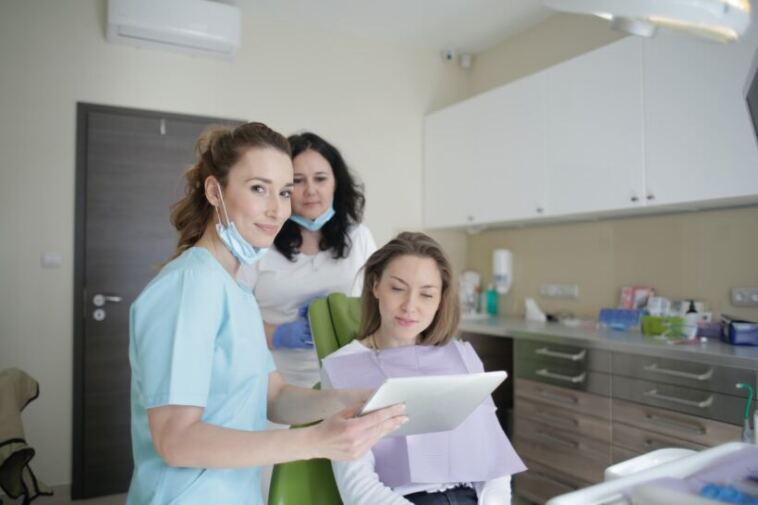- Like
- SHARE
- Digg
- Del
- Tumblr
- VKontakte
- Flattr
- Buffer
- Love This
- Save
- Odnoklassniki
- Meneame
- Blogger
- Amazon
- Yahoo Mail
- Gmail
- AOL
- Newsvine
- HackerNews
- Evernote
- MySpace
- Mail.ru
- Viadeo
- Line
- Comments
- Yummly
- SMS
- Viber
- Telegram
- JOIN
- Skype
- Facebook Messenger
- Kakao
- LiveJournal
- Yammer
- Edgar
- Fintel
- Mix
- Instapaper
- Copy Link
Introduction
Orthodontics is a specialized branch of dentistry that focuses on the diagnosis, prevention, and treatment of dental and facial irregularities.
It deals with correcting misaligned teeth and jaws to enhance both the functionality and aesthetics of a person’s smile.
In this comprehensive guide, we will explore the world of orthodontics, shedding light on its purpose, common treatments, benefits, and how it can transform your oral health.
The Importance of Orthodontics
Orthodontic treatment plays a crucial role in maintaining optimal oral health. Misaligned teeth not only affect your smile but also impact your overall oral well-being. Here are some key reasons why orthodontics is essential:
Enhanced Dental Functionality
When your teeth are properly aligned and fit together harmoniously, they function more efficiently. This means you can chew food properly, aiding digestion and ensuring you receive all the necessary nutrients from your meals.
Improved Oral Hygiene
Misaligned teeth can create tight spaces or overcrowding, making it difficult to clean certain areas effectively. This increases the risk of plaque buildup, tooth decay, gum disease, and bad breath. Orthodontic treatment helps align your teeth correctly, enabling better oral hygiene practices.
Alleviation of Jaw Pain
Jaw pain can stem from malocclusion (improper bite alignment). Orthodontic treatment corrects these issues by realigning the jaw joints and improving site functionality. This alleviates discomfort in the jaw area.
Aesthetic Benefits
An attractive smile can boost confidence and self-esteem. Orthodontic treatment enhances the appearance of your teeth by straightening them, closing gaps between teeth, and correcting any protrusion or crowding issues.
Now that we understand why orthodontics is crucial for overall oral health let’s delve into some common orthodontic treatments available today.
Traditional Braces
Traditional braces have been a staple in orthodontic treatment for decades. They consist of metal brackets, wires, and elastic bands that operate closely to shift your teeth into proper alignment slowly. While they may seem old-fashioned compared to newer alternatives, traditional braces remain highly effective in treating various types of malocclusion.
How Traditional Braces Work
The process begins with an initial consultation where your orthodontist evaluates your oral condition and discusses your treatment plan. If braces are deemed suitable for you, the orthodontist will affix the metal brackets onto each tooth using a special adhesive. Wires are then threaded through the brackets and secured with elastic bands. Over time, these wires exert gentle pressure on your teeth, guiding them into their correct positions.
The Benefits of Traditional Braces
Traditional braces offer several advantages that have stood the test of time:
- Versatility: Traditional braces can effectively address a wide range of dental issues and complex cases.
- Reliability: With proper care and regular adjustments by your orthodontist, traditional braces consistently produce successful outcomes.
- Cost-effectiveness: Traditional braces tend to be more affordable compared to some newer orthodontic options.
- Customizability: You can choose from an array of colorful elastic bands to personalize your traditional braces if desired.
While the appearance of traditional braces may deter some individuals from seeking a more discreet option, others embrace this classic approach as a chance to express their personality.
Invisalign: Invisible Alignment
Invisalign has revolutionized the field of Lux orthodontics by offering a virtually undetectable alternative to traditional braces. This innovative treatment utilizes clear aligners made from medical-grade plastic that are custom-made for each patient’s unique dental structure.
How Invisalign Works
The Invisalign treatment process starts with a consultation where digital impressions or physical molds are taken of your teeth. These impressions serve as the basis for creating a series of custom aligners. Each aligner is worn for about two weeks and gradually shifts your teeth into the desired position. As you progress through the series, your smile transforms, and your orthodontist monitors your progress with regular check-ups.
The Benefits of Invisalign
Invisalign offers numerous advantages that have made it immensely popular among patients:
- Aesthetics: The clear aligners are invisible. Hence, you can go for orthodontic treatment without affecting your teeth.
- Removability: Unlike traditional braces, Invisalign aligners can be easily removed for eating, brushing, and flossing. This means you don’t have to make any significant dietary changes or struggle with cleaning around brackets and wires.
- Comfort: Invisalign aligners are made from smooth plastic, minimizing discomfort and preventing mouth sores often associated with metal braces.
- Convenience: With Invisalign, you will have fewer appointments compared to traditional braces since there are no adjustments needed. This means less time spent at the orthodontist’s office.
- Discreet: Finally, Invisalign is an excellent choice for individuals who desire a discreet orthodontic treatment option that fits seamlessly into their lifestyle.
See also:


